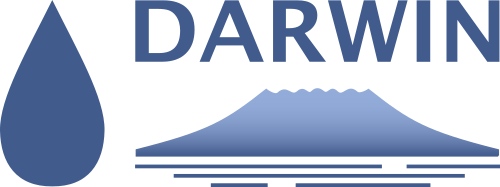GFog-ML Ground fog detection and analysis with Machine Learning [funded by DFG] - Status: closed
Project staff:
Dr. Boris Thies
Sebastian Egli
Abstract:
 Fog and low stratus are of considerable importance to a variety of features in climatic processes and ecological systems. Fog often acts as a water supply to otherwise arid ecosystems and by influencing radiative transfer processes in the atmospheric boundary layer it acts as a modifier in the climate system. Fog also directly interferes with many aspects of human life. By reducing visibility it often leads to hazardous situations in air, sea and road traffic. Due to modifications in the heat fluxes of the lower atmosphere, fog also prolongs inverted weather situations, thus often reducing air quality significantly.
Fog and low stratus are of considerable importance to a variety of features in climatic processes and ecological systems. Fog often acts as a water supply to otherwise arid ecosystems and by influencing radiative transfer processes in the atmospheric boundary layer it acts as a modifier in the climate system. Fog also directly interferes with many aspects of human life. By reducing visibility it often leads to hazardous situations in air, sea and road traffic. Due to modifications in the heat fluxes of the lower atmosphere, fog also prolongs inverted weather situations, thus often reducing air quality significantly.
In this project, a climatology of fog hours/day based on satellite data recorded since 2004 by the Spinning Enhanced Visible and Infrared Imager system aboard the Meteosat Second Generation satellites (SEVIRI) will be computed for Central Europe. It will be the first long term, spatially explicit climatology for fog based on satellite data with a temporal resolution of 15 minutes. Previous studies on fog detection based on satellite data suffered from bad detection results due to the high spatiotemporal dynamics of fog layers In this project, the derivation of fog patches from raw satellite data will thus be supported by machine learning algorithms to enhance the outcome additionally.
Description:
The project is split into several working packages.
- In a first step, a fog and low stratus (FLS) climatology for the period from 2006 to 2015 is generated for Central Europe. This is achieved by the adaptation of an algorithm previously developed at the LCRS (SOFOS). The technique is based on multiple dynamical threshold tests to distinguish FLS from other cloud and surface types. The results will help to get a baseline overview of FLS frequencies and trends in Central Europe.
- In a second step, machine learning (ML) algorithms will be used to enhance the detection of fog by separating FLS into fog and low stratus patches. When a suitable ML model for fog detection is found, the technique will be applied to the same 10 year period.
- As the original MSG data has a subsatellite resolution of 3*3km, the algorithm will then be adapted using a pansharpening approach developed at the LCRS, to process the study domain in a 1*1km resolution. This will help to improve results especially in complex terrain where finer resolutions help to depict fog patches adequately.
- In a last step, spatiotemporal trends of fog frequencies will be analyzed statistically and, with the help of timeseries and trend analyses, autochthonous and allochthonous influence factors will be determined.
Publications and poster presentations:
2024 - Pauli, E.; Cermak, J.; Bendix, J. & Stier, P. (2024): Synoptic scale controls and aerosol effects on fog and low stratus life cycle processes in the Po valley, Italy. Geophysical Research Letters 51(20), e2024GL111490.
2023 - Yi, L.; Li, M.; Liu, S.; Shi, X.; Li, K. & Bendix, J. (2023): Detection of dawn sea fog/low stratus using geostationary satellite imagery. Remote Sensing of Environment 294, 113622.
2020 - Pauli, E.; Andersen, H.; Bendix, J.; Cermak, J. & Egli, S. (2020): Determinants of fog and low stratus occurrence in continental central Europe – a quantitative satellite-based evaluation. Journal of Hydrology 591, 125451.
2019 - Drönner, J.; Egli, S.; Thies, B.; Bendix, J. & Seeger, B. (2019): FFLSD - Fast Fog and Low Stratus Detection tool for large satellite time-series. Computers & Geosciences 1, 1-36.
- Egli, S.; Thies, B. & Bendix, J. (2019): A spatially explicit and temporally highly resolved analysis of variations in fog occurrence over Europe. Quarterly Journal of the Royal Meteorological Society 1, 1-20.
2018 - Egli, S.; Thies, B. & Bendix, J. (2018): A Hybrid Approach for Fog Retrieval Based on a Combination of Satellite and Ground Truth Data. Remote Sensing 10(4), 1-26.
2016 - Egli, S.; Thies, B.; Drönner, J.; Cermak, J. & Bendix, J. (2016): A 10 year fog and low stratus climatology for Europe based on Meteosat Second Generation data. Quarterly Journal of the Royal Meteorological Society 143(702), 530-541.
- Seidel, J.; Ketzler, G.; Bechtel, B.; Thies, B.; Philipp, A.; Böhner, J.; Egli, S.; Eisele, M.; Herma, F.; Langkamp, T.; Petersen, E.; Sachsen, T.; Schlabing, D. & Schneider, C. (2016): Mobile measurement techniques for local and micro-scale studies in urban and topo-climatology. Die Erde 147(1), 259-284.




